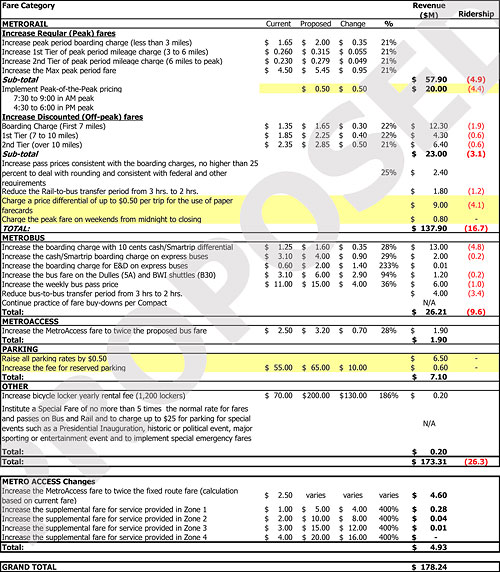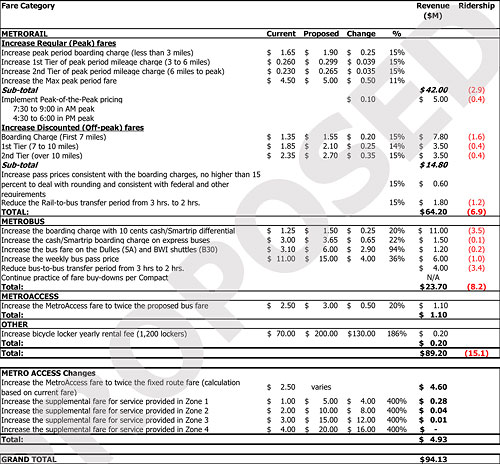WMATA releases more fare increase options
Heeding the request of the Riders’ Advisory Council, advocates and blogs, WMATA staff released a larger set of options, especially for fare increases. The Board is expected to approve a public hearing that will let riders choose between these options, service cuts, and using capital dollars.
The Board meeting should start soon. You can listen by clicking on the large button that appears on this page once the meeting starts; I’ll also live tweet the meeting @ggwash.
There are three fare “options”, each of which has multiple components to mix and match. The first is the fare increase from the General Manager’s budget, a total of $94 million. The second scales that fare increase up to $127 million, enough to cover all proposed service cuts, and the third adds in even more options from those suggested by advocates and the RAC, totaling a whopping $178 million — nearly enough to cover the entire budget with fare increases. The second and third, however, also involve high fares and painful ridership losses.
Here’s the table for the third chart, maximum fares:
All fare buckets have increased from the GM’s recommendation, and the items I highlighted in yellow are the items added or modified in addition based on advocate suggestions: the peak-of-the-peak, a differential between SmarTrip and paper farecards on rail, and parking rate increases.
They did not evaluate a peak of the peak charge for bus or increasing the SmarTrip differential for bus, as some suggested.
The rightmost column gives the estimated ridership losses for each item. While WMATA has data on the ridership losses that come with small fare increases, once we get to items of this magnitude the ridership loss numbers become even more uncertain. I doubt that charging a differential for paper farecards would cost 4.1 million rides, though we really don’t know.
At the same time, they don’t list any ridership loss for increasing parking prices. At some lots which fill up, that might be true, but other lots don’t fill up and we would expect some loss of ridership if those lots go up in price.
All three options also increase the MetroAccess fares for service beyond the required service area of ¾ miles from a transit station.
Here is the first chart, fare increases in the General Manager’s proposed budget:
Here is the second, scaling up the fare increase to remove service cuts:



